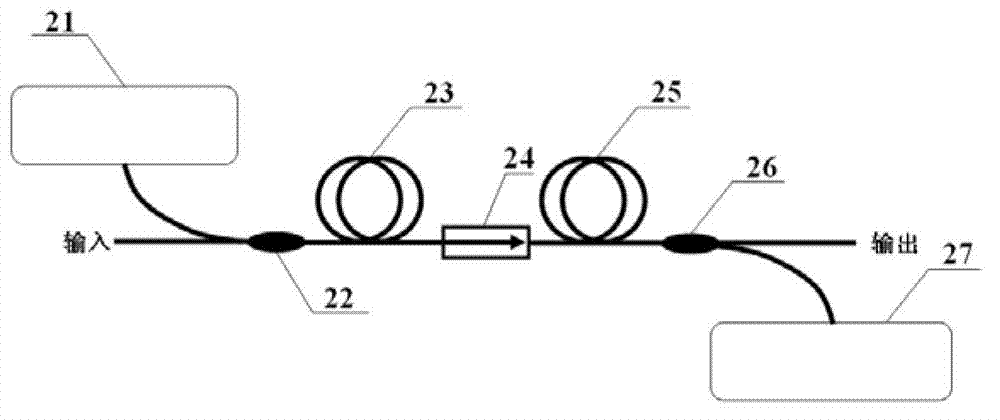All-optical wavelength converter of optical solitons on basis of weak light regulation
A technology of optical wavelength and converter, applied in the field of optical communication, can solve the problem that it is difficult to cover the 2 micron band
- Summary
- Abstract
- Description
- Claims
- Application Information
AI Technical Summary
Problems solved by technology
Method used
Image
Examples
Example Embodiment
[0025] Example 1:
[0026] The invention provides an all-optical wavelength converter based on weak light regulating optical soliton, such as figure 2 As shown, the system includes a femtosecond pulse light source 11, a wide tuning signal source 12 (weak control light), a coupler 13, an optical amplifier 14, an optical coupler 15, a highly nonlinear photonic crystal fiber 16 and a spectrum analyzer 17.
[0027] When the femtosecond optical pulse and the weak control light are simultaneously input to the optical amplifier 14, the gain of the weak control light at different wavelengths within the gain bandwidth of the optical amplifier is different due to the cross-gain modulation effect, thus changing the femtosecond optical pulse. Peak power, that is, by adjusting the wavelength of the weak control light near the gain bandwidth, the peak power of the femtosecond optical pulse can be effectively adjusted; then, the adjusted femtosecond optical pulse is coupled to the highly nonlinea...
PUM
| Property | Measurement | Unit |
|---|---|---|
| Core diameter | aaaaa | aaaaa |
| Fiber length | aaaaa | aaaaa |
| Nonlinear coefficient | aaaaa | aaaaa |
Abstract
Description
Claims
Application Information
 Login to view more
Login to view more - R&D Engineer
- R&D Manager
- IP Professional
- Industry Leading Data Capabilities
- Powerful AI technology
- Patent DNA Extraction
Browse by: Latest US Patents, China's latest patents, Technical Efficacy Thesaurus, Application Domain, Technology Topic.
© 2024 PatSnap. All rights reserved.Legal|Privacy policy|Modern Slavery Act Transparency Statement|Sitemap



